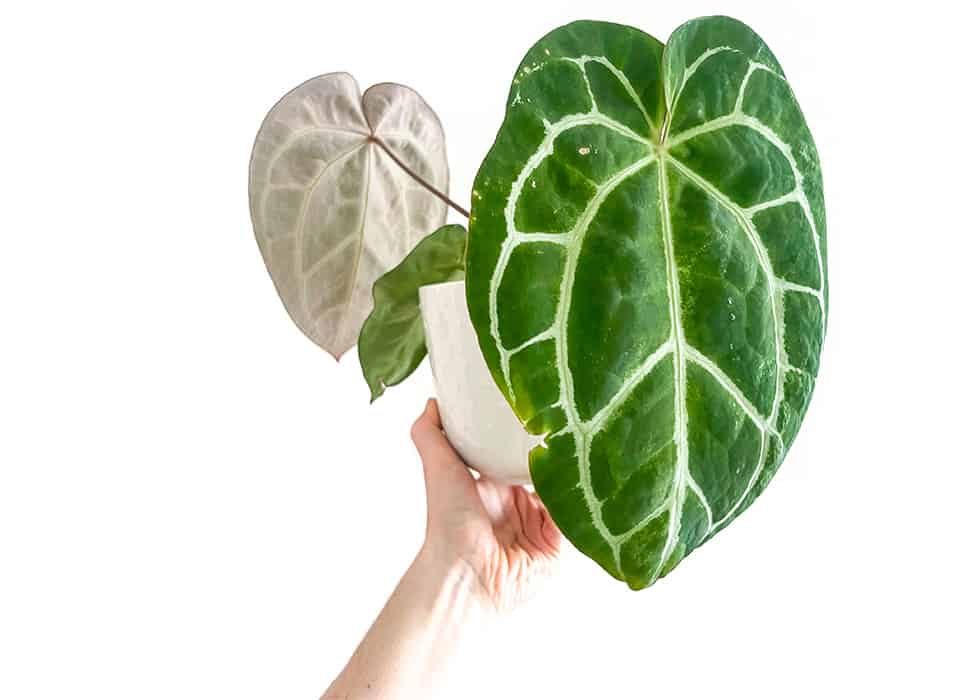Anthurium Crystallinum’s eye-catching foliage will satisfy even the most discerning plant enthusiasts. This heart-shaped Anthurium has velvety leaves with prominent silver veins that shimmer like crystals in light, and that is how it got its name, Crystal Anthurium.
The new foliage emerges dark bronze, only changing to dark green as the velvet leaves mature, making it a captivating, stunning species in the anthurium genus.
Anthurium Crystallinum is a species in the Araceae family native to tropical regions of Central and South America, and it will be a great addition to your indoor jungle.
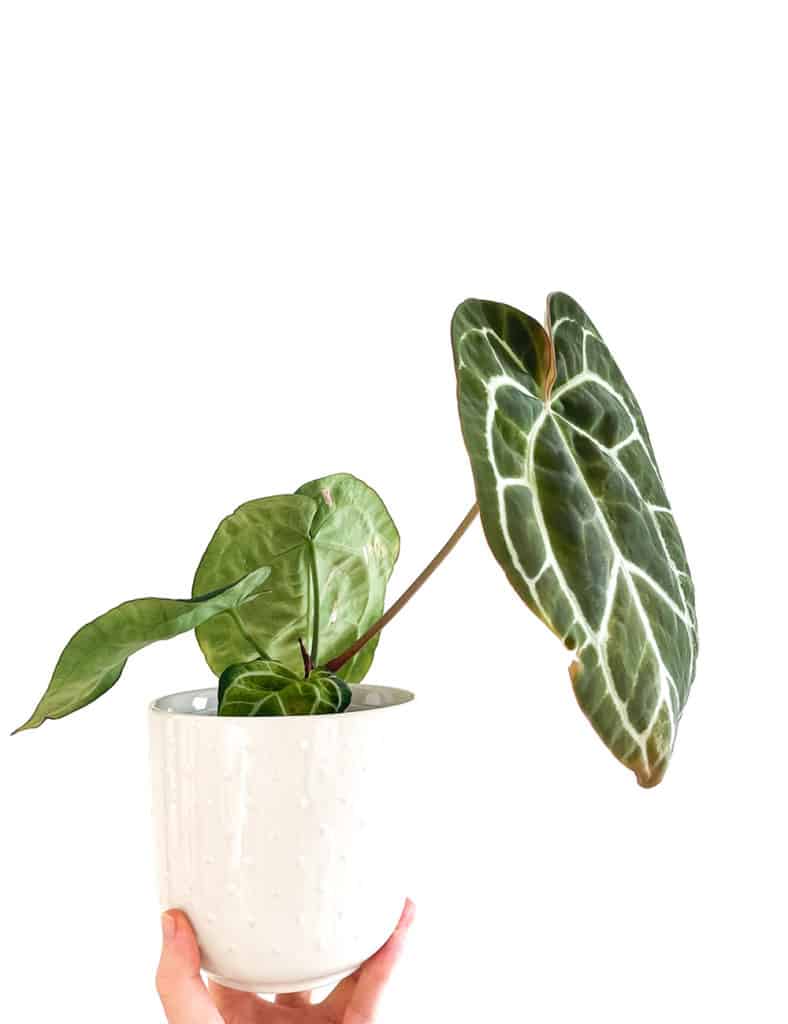
In my experience growing multiple specimens, Anthurium crystallinum is not difficult to care for.
I don’t find it fussy or challenging to acclimatize like Anthurium warocqueanum, the Queen Anthurium.
Some Anthurium crystallinum I acquired locally, some I imported. You can see below the difference in the leaf look depending on where I got it from.
Neither of these may be true species but rather some kind of hybrids. Nevertheless, they were sold to me as Anthurium crystallinum.
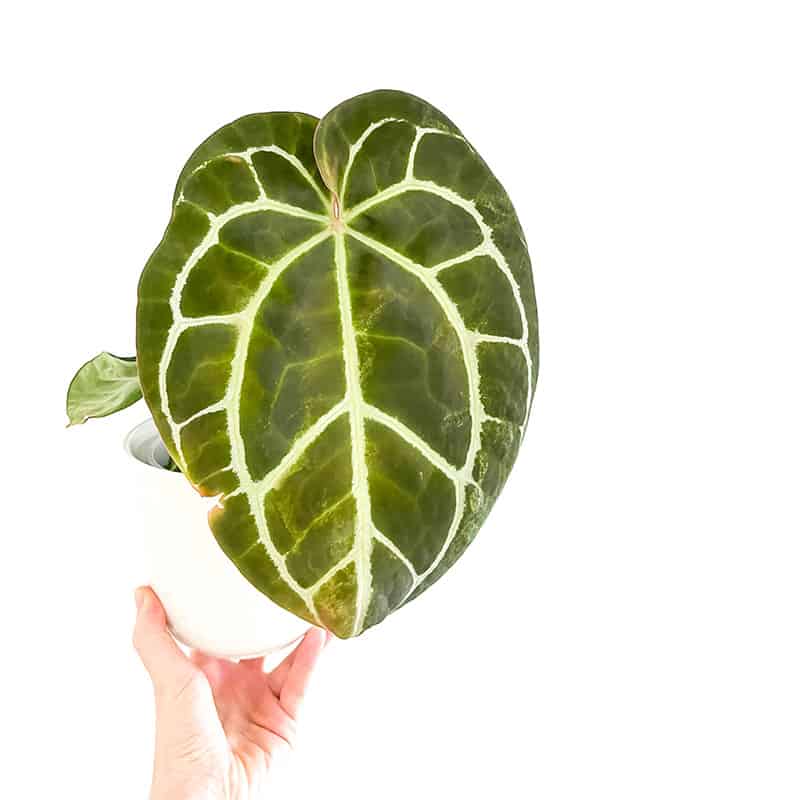
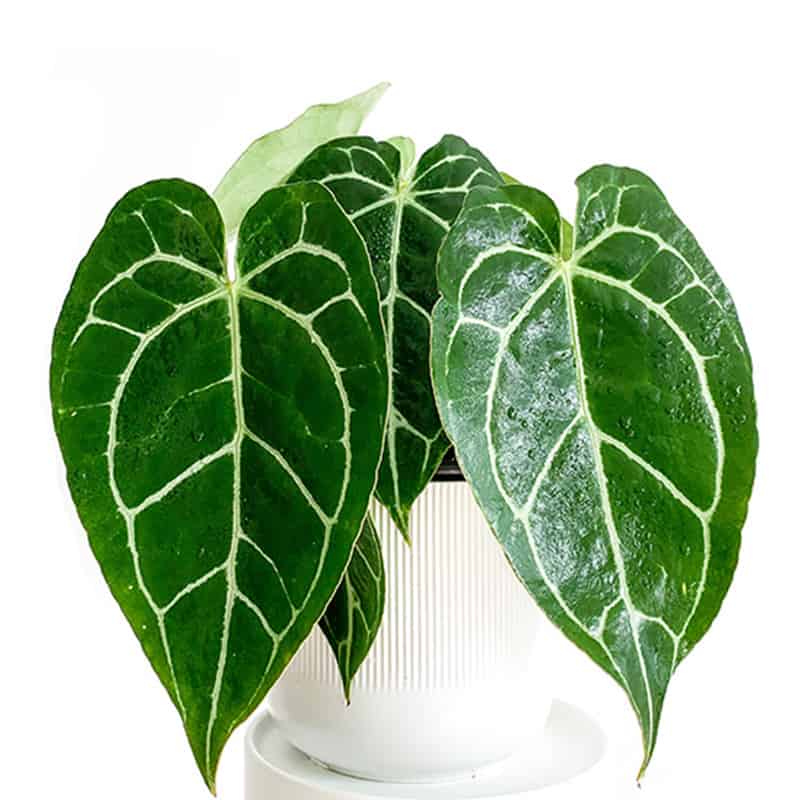
ANTHURIUM CRYSTALLINUM ‘IN THE WILD’
Anthurium crystallinum is a species native to the tropical regions of Central and South America, where it can grow as an epiphyte on other trees.
While it can attach itself to trees, in the wild it will grow just about anywhere. In indoor conditions, all my anthuriums, including Anthurium crystallinum grow in a regular pot without a moss poll or any other support.
In order for the aerial roots to attach themselves to the moss poll, you need to keep it moist at all times. I found it quite challenging in regular house conditions when attempted to do with climbing philodendrons. Unless you are lucky to have an indoor living wall, I would recommend keeping your anthurium in a regular pot. It will do just fine.
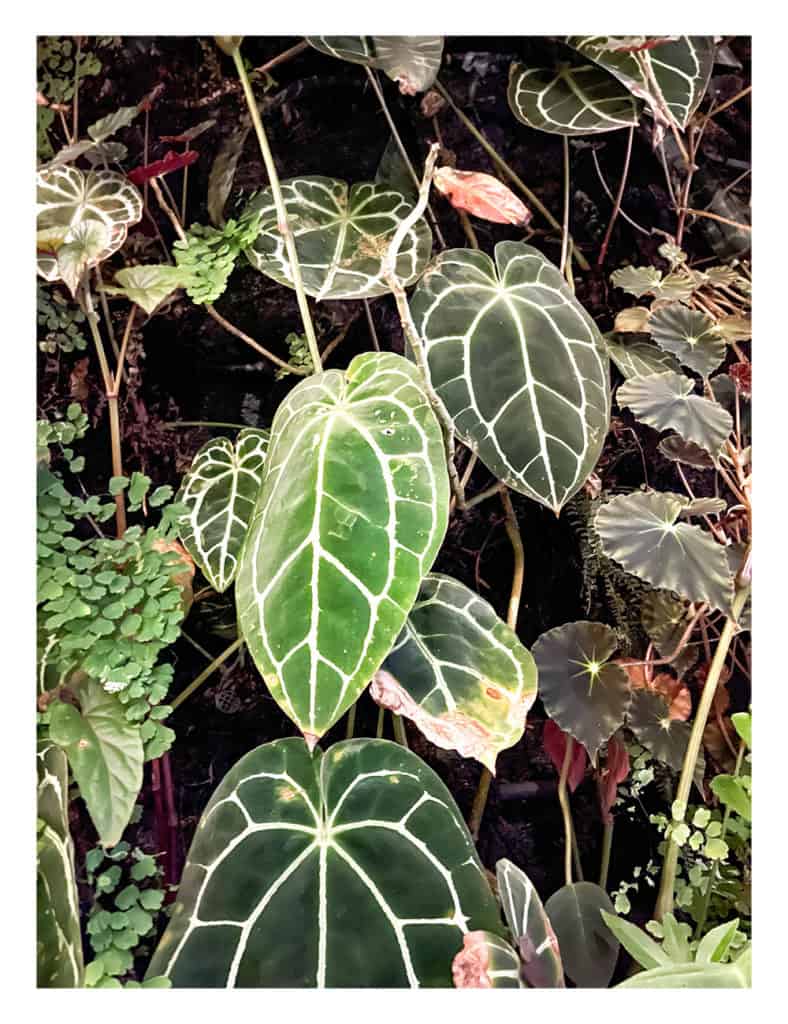
HOW TO GROW ANTHURIUM CRYSTALLINUM INDOOR
How to care for anthurium crystallinum depends on where you live. Trying to replicate its native habitat is nearly impossible in indoor conditions.
But understanding what crystallinums prefer in general will greatly help you in your care of this Anthurium indoors.
Through observation, you will get quite attuned to what this velvet leaf anthurium needs.
Below are some general guidelines which you should adjust based on your conditions. I live in tropical Singapore, which is sunny all year round with an equal 12hrs for day and night.
LIGHT: What light does Anthurium Crystallinum need?
Like most anthuriums, Crystal Anthurium enjoys bright filtered, indirect light. I grew my crystallinums under grow lights on a plant shelf and near a window, and they did very well in both locations.
You should avoid direct sunlight as it will scorch its delicate leaves. Based on my observations Anthurium crystallinum will grow well under various light conditions provided other factors such as soil mix, and watering cadence are done right.
You shouldn’t fear this Anthurium if you don’t have the best light conditions. It will adjust.
SOIL: What is the best potting soil for Anthurium Crystallinum?
Having a proper soil mix and keeping it adequately moist is the most critical factor for growing this anthurium species.
Using an aroid mix is best for anthuriums. The exact blend of ingredients will depend on what is available in your geographical area. My fast-draining mix includes coco husk, perlite, coco peat, orchid bark, and activated charcoal.
I find peat moss to be not ideal as it sinks to the bottom of the pot and stops the air from circulating. This can create conditions for root rot to establish itself and deteriorate the plant. Not to mention the unsustainability and negative environmental consequences of using peat moss.
Learn if you need to repot your anthurium in my guide to anthurium repotting.
WATER: How should you water Anthurium Crystallinum?
Overwatering will not be your problem if you have a fast-draining aroid mix as a potting medium.
While watering on schedule has its advantages (like not forgetting about some plants!), I’m a proponent of a conditional watering schedule.
In my conditions, I give my plants a week (with some exceptions, looking at you thirsty peace lily!) before I think of watering them again.
But it depends on your potting mix, temperature, pot size, etc., so you should figure out what works best for you.
When it is raining outside or very overcast and the ambient temperature drops, it takes my plants longer to absorb the water. In this case, I may wait an additional day or two before I attempt to water again.
As a rule of thumb, if anthurium crystallinum leaves start to droop, you let them go without water for too long. Don’t let them dry out completely. They like it moist, not wet, all the time.
HUMIDITY: What humidity does Anthurium Crystallinum like?
I found humidity to be the least important factor when growing anthuriums. While higher humidity is desired, anthurium crystallinum is a hardy anthurium species and will acclimatize.
Humidity is essential, though, when new leaves emerge. They need some moisture to emerge out of a cataphyll properly, but you can just mist them to help them if they seem stuck.
I usually ‘help’ them unfurl but more often than not, I just manage to snap the new leaves as they are very fragile when first emerging.
My ambient humidity is about 50%.
TEMPERATURE: What temperature does Anthurium Crystallinum need?
Your average household temperature will be ok. It will grow just fine as long as you won’t let it drop below 16-17C. Remember, these are tropical plants, so they like it warm!
FERTILIZER: What should you feed Anthurium Crystallinum?
Anthurium crystallinum benefits from a regular feeding schedule. I use liquid fertilizer, which I add at half strength to almost every watering.
Anything stronger may burn the leaves, so I always err on caution when fertilizing. As long as you have a fast-draining potting mix, the risk of overfertilizing is low.
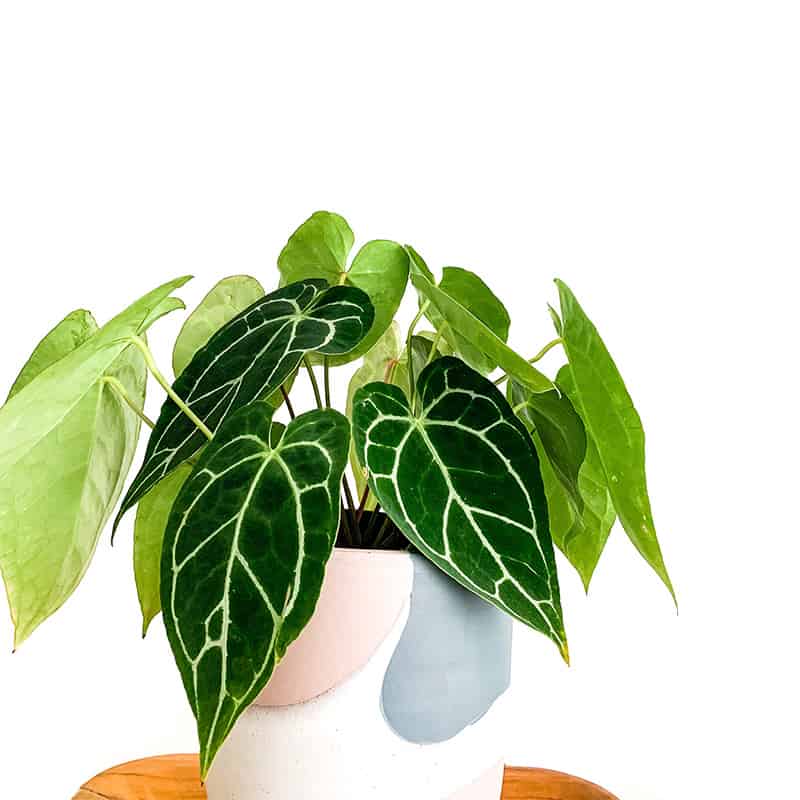
HOW TO PROPAGATE ANTHURIUM CRYSTALLINUM
There are various propagation methods, and you should try all of them at some point in your journey. You can use root division, stem division, or pollination.
HOW TO PROPAGATE ANTHURIUM THROUGH STEM DIVISION – A MINI GUIDE
Propagation through root division
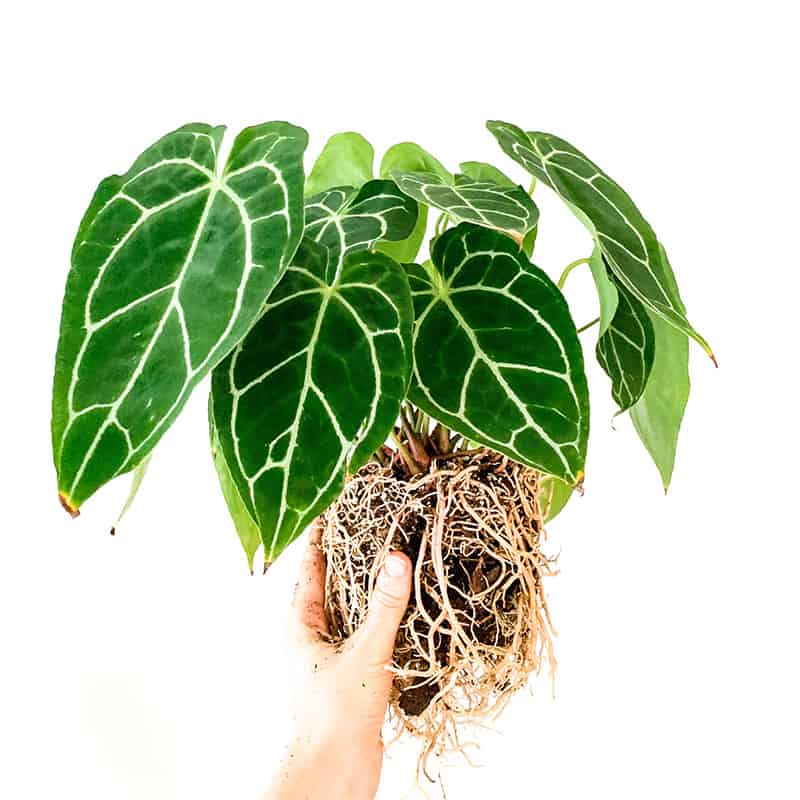
I found the easiest and by far the most successful method of propagating Anthurium crystallinum is by root division. It works best for mature, established plants. If you have multiple plants growing together in one pot, separate them carefully, ensuring roots on all sections and repot in individual pots.
Propagation by stem division
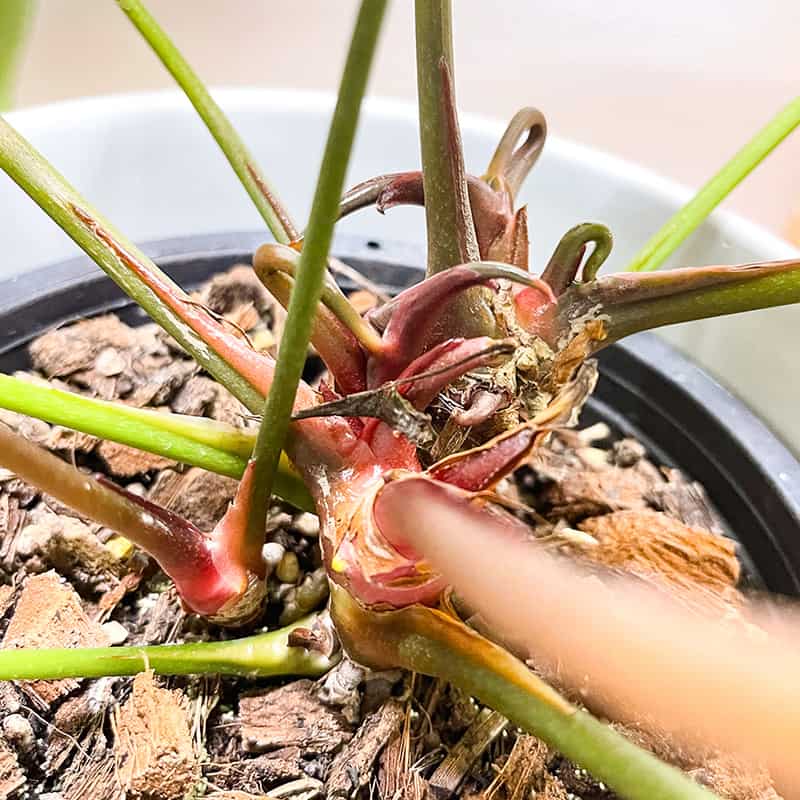
If you have only one mother plant and want to create multiple plants, you need to chop the stem. To do that, you need first to find the growing eye, the little bud on the stem around where the current leaves are. The growing eye is where the new growth will emerge from.
If the stem has more than one part that formed the roots, the division should be pretty straightforward, and the chances of success are high.
Propagation through seeds – pollination
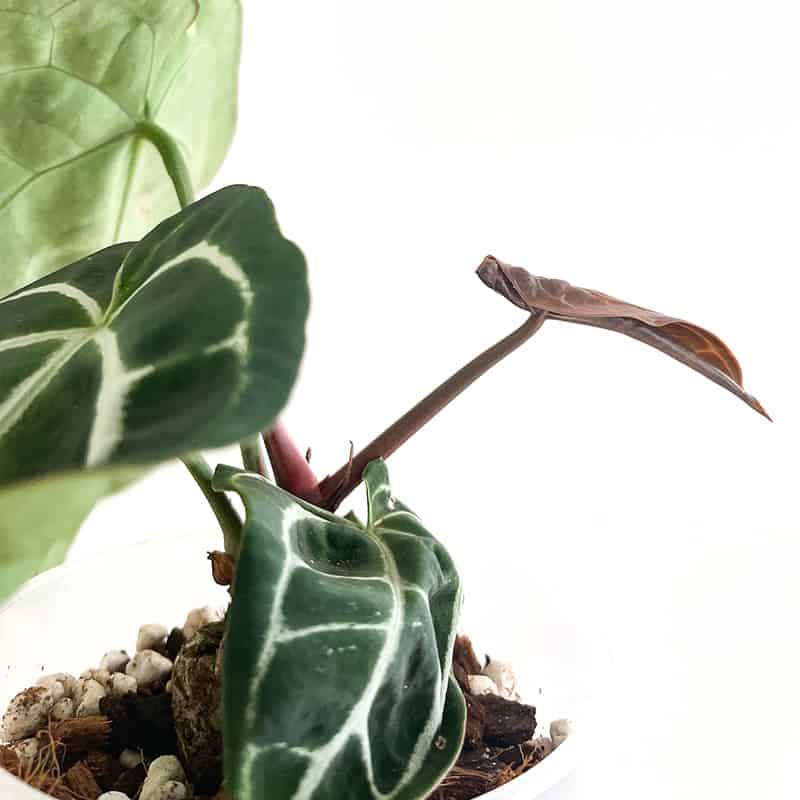
This is the most complex and time-consuming method of propagating Anthurium crystallinum yet arguably the most satisfying. After all, you’ll be able to observe all stages of growth, from forming pollen to pollination, growing berries, germination, and new growth.
If you have a mature specimen developing an inflorescence (you need at least two for pollination), you may try and attempt this method for fun. But it is hard to execute and a very lengthy process. But don’t let me discourage you! I have plenty of pollen stored in a freezer waiting for the chance to use it and have fun with pollination.
In general, I found that the germinated seeds produce relatively weak plantlets in my conditions. Having a greenhouse or a grow tent with optimal conditions would help, but that’s a discussion for another blog.
You can, of course, buy the seeds, but they need to be fresh as they are only viable for a couple of days, after which they will go to waste. And it can be quite a costly endeavor.
If you’d like to learn how to propagate anthuriums from seeds (the process is very similar for all anthurium species), check out my other blog, which has a mini propagation guide on the example of Anthurium gracile.
ANTHURIUM CRYSTALLINUM INFLORESCENCE
The proper name for the anthurium crystallinum ‘flower’ or ‘bloom’ is inflorescence. The spadix contains both male and female flowers.
The male and female phases happen at different times, one after another, so if you want to attempt pollination, you will need either two inflorescences at different stages at the same time or saved pollen from the previous inflorescence.
Have you ever wondered about the difference between Anthurium crystallinum and magnificum or how to differentiate Crystal Anthurium from Anthurium clarinervium?
Anthurium crystallinum is often confused with other similar-looking anthuriums. For a beginner plan parent, this is quite natural. But once you start collecting these stunning velvet leaf anthuriums, you will have no problem distinguishing one from another.
ANTHURIUM CRYSTALLINUM VS CLARINERVIUM

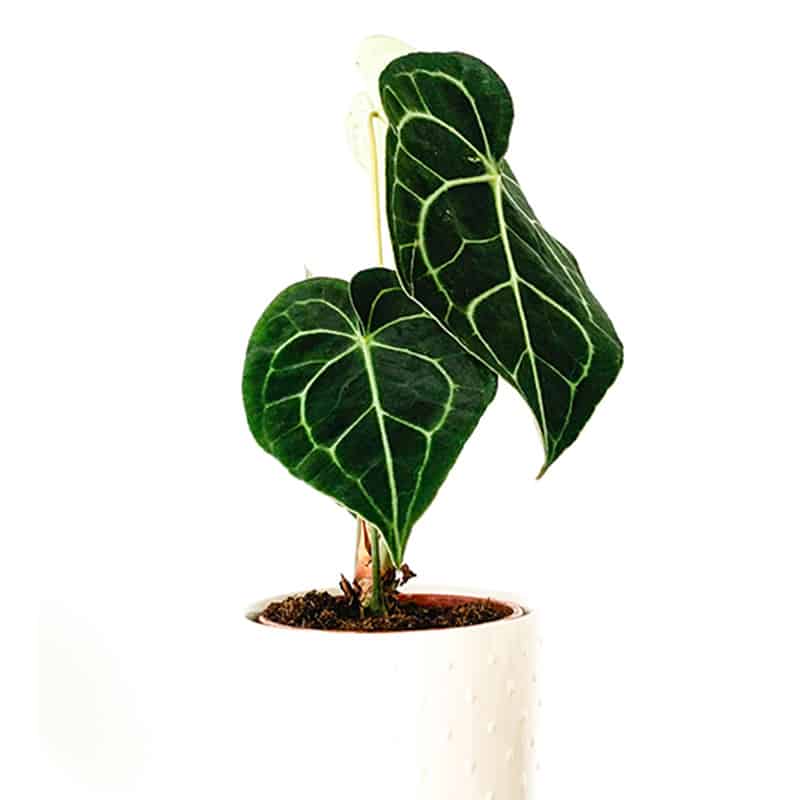
Anthurium crystallinum has different shapes and textures of the leaves. While clarinervium has more heart-shaped cardboard-like foliage, Anthurium crystallinum leaves are more prolonged and lighter in color. I find crystallinum a much faster grower than clarinervium.
ANTHURIUM CRYSTALLINUM VS MAGNIFICUM
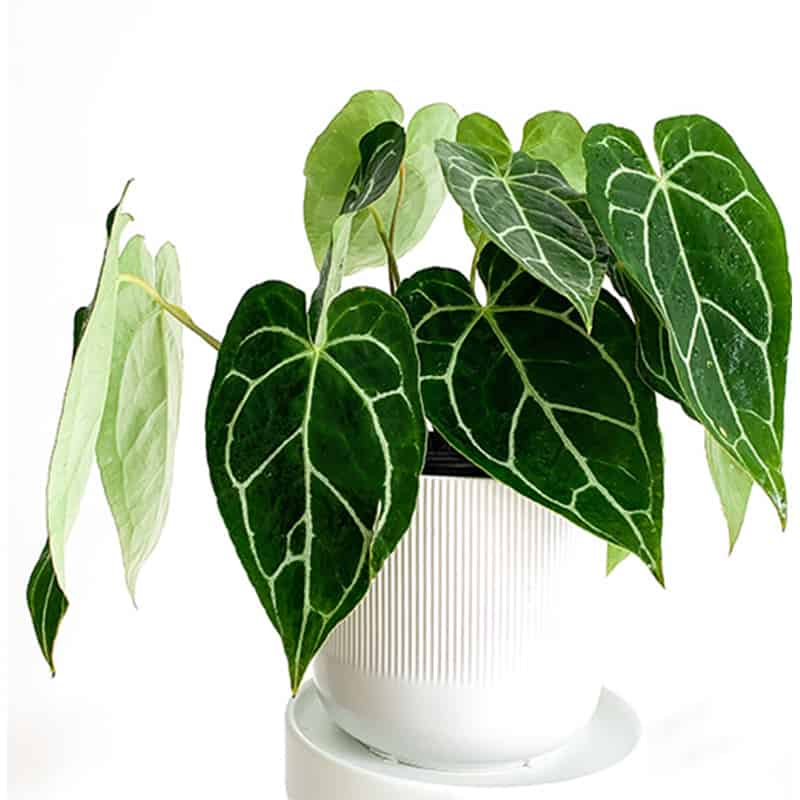
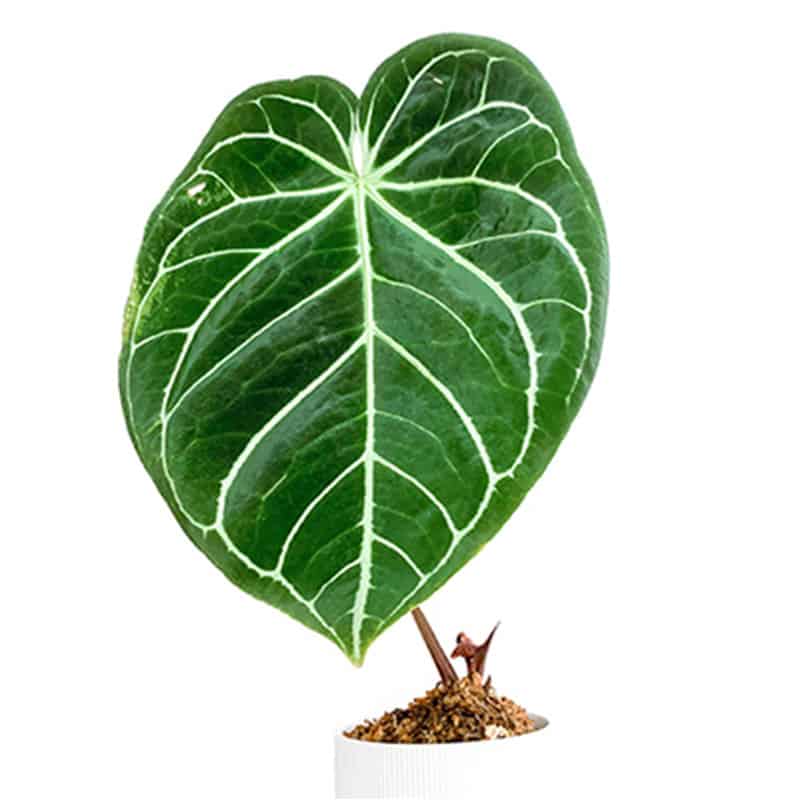
Anthurium crystallinum has more prominent veins, and in general, the leaves are smaller than those of Anthurium magnificum. It is easy to tell the two apart. I have a dedicated blog to anthurium magnificum care.
COMMON PROBLEMS: TROUBLESHOOTING YOUR ANTHURIUM CRYSTALLINUM
What to do when your Crystal Anthurium is not growing? Or worse, what to do if the leaves are yellowing and dropping? Here are some common issues you can encounter when growing Anthurium crystallinum.
1. Yellowing leaves
Why are the leaves turning yellow?
If it is an older leaf yellowing, you have nothing to worry about. It is perfectly natural. Old leaves dying is a natural phenomenon and should not be a cause of concern.
However, if the newer leaves are starting to yellow and more than one simultaneously, it usually has to do with the soil mix being too wet.
Soggy potting mix can cause root rot and can quickly deteriorate your aroid. Examine the soil and the roots before suspecting anything else.
2. Tips of the leaves are browning
Why are the leaves’ tips brown and crispy?
It’s the opposite of overwatering. You probably need to increase watering as the plant is not getting enough water.
Especially when it is pushing out a new leaf, it needs more water. Is your pot large enough, or are roots already pushing on all sides?
Maybe a simple solution is to move the plant away further from the source of sunlight as it may be drying the potting medium or air around it faster.
But my guess would be to check watering first and see if the plant is not drying out too much in between the waterings.
3. Brown spots on leaves
It could be a bacterial infection or sunburn. If you haven’t exposed your crystallinum to direct sunlight, you can most likely eliminate this cause.
If the brown spots look like lesions with yellow halos, become almost transparent and happen all over the leaf, you’ve got a bacterial issue. Cut off the damaged leaves to prevent further spread.
Remember to sterilize your scissors or knife afterward to prevent contamination. You may not save the leaf, but the plant will probably survive if you catch it early.
I’ve never had a bacterial issue on my crystallinums, but I frequently do on Anthurium forgetiis.
4. Drooping leaves
Why is my Anthurium crystallinum drooping?
The cause could be twofold. It’s most likely either overwatering or underwatering. Adjust your watering schedule and observe if it solves the issue.
5. Pests
Are Anthurium crystallinum prone to pests?
Anthurium crystallinum is not very susceptible to pest infestation, so it’s a relatively safe plant to own in your collection.
I’ve never had any pests on my anthurium crystallinum, but the usual culprits are spider mites, scale, thrips, and mealybugs.
Identify what pests you have and follow the specific guidelines to eradicate them. Getting rid of these pests is not the most difficult if you notice them in time.
6. Root rot
How do I know if my Anthurium has root rot?
Root rot happens when there isn’t enough air circulation around the roots. It is critical to have a very airy, light, porous potting mix to ensure the roots can breathe.
The roots will turn brown and mushy. You will have to cut off the decayed roots and re-root the plant again.
Some of the leaves may die because the smaller root ball won’t be able to support as many leaves.
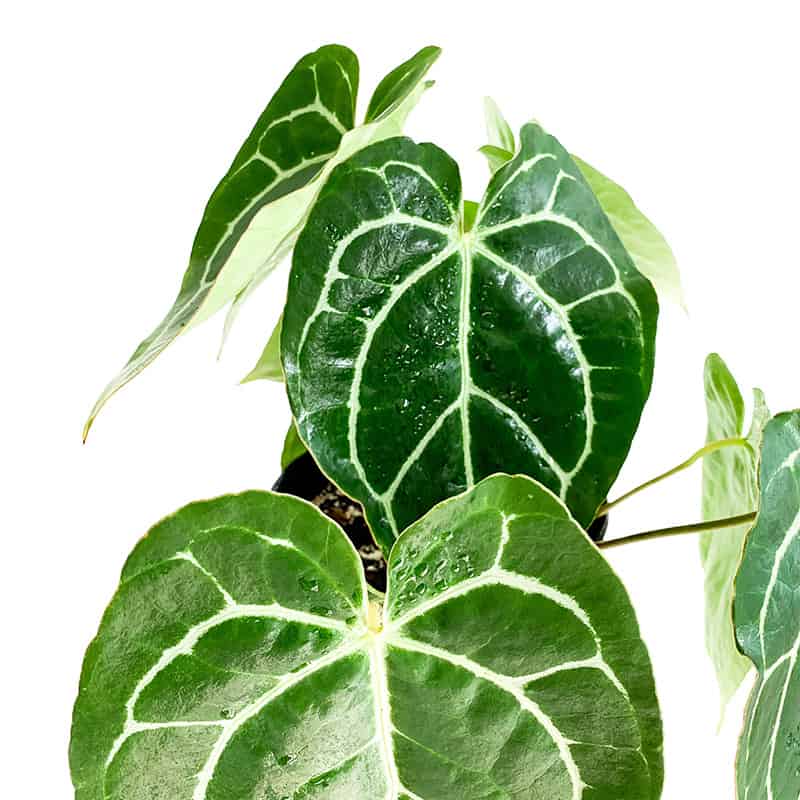
When I first started my journey with aroids, I had more questions than answers. I spent countless hours reading blogs and following more experienced enthusiasts on Instagram or Facebook groups searching for some answers.
And usually, I got conflicting recommendations which were frustrating at first but eventually made me realize that it’s all true.
What works for me may not work for you as there are so many variables in play, from the environmental conditions in your house to the health of the actual specimen you brought home.
The section below aims to answer some of the questions I had throughout my journey of creating an urban jungle. I hope it helps.
FREQUENTLY ASKED QUESTIONS ABOUT ANTHURIUM CRYSTALLINUM CARE
How do you make Anthurium crystallinum grow faster?
It is sometimes frustrating to see your plant frozen in time, isn’t it? As if nothing you do works to make it push that new leaf.
What plants teach you is patience and appreciation for nature.
Having said that, provided that your plant is overall healthy, nature will do its trick if you provide it with ample light, some fertilizer, and give it enough water.
Providing your crystal anthurium with appropriate growing conditions will reward you with fast growth and beautiful foliage.
Mist or not to mist?
To be honest, misting doesn’t move the needle. While anthurium crystallinum are tropical plants that love high humidity, recreating those conditions indoors outside of a grow tent will be very difficult.
Misting may increase relative humidity for a very brief time, but it will not stay like that for long. A humidifier is a better option if you want to invest a bit.
I mist only for two reasons. First, when the new leaf has a hard time emerging, I mist it to help as water provides a lubricant for the struggling leaf. Second, for fun. I love the earthy scent the plants and soil give off when humidity rises.
Is Anthurium crystallinum hard to care for?
No, not really. It’s probably one of the easiest anthuriums to take care of when starting with aroids. Anthurium magnificum is another relatively easy one.
You will be pretty successful if you can provide essential light, water, and soil requirements.
When should you repot your anthurium crystallinum?
When the roots start to escape from the pot would be a good time. I like to keep my anthuriums in clear plastic pots to monitor root growth.
As each plant’s growth is unique, there isn’t any particular schedule you should follow. Just observe and see what the plant needs.
Read next: The Ultimate Guide to Repotting Anthuriums: When & How to Repot.
